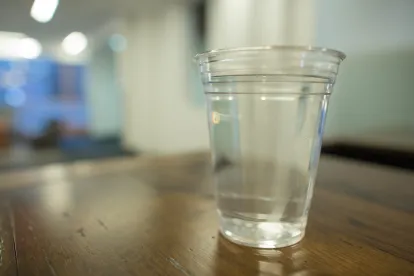The following are changes implemented by the California Office of Environmental Health Hazard Assessment (OEHHA) regarding chemicals, and a summary of enforcement actions during the first quarter of 2016.
Chemicals Recently Added to the Prop 65 List
1. Bisphenol A (BPA): Labeling Required by May 11, 2016
On May 11, 2015, OEHHA added BPA to the Prop 65 list of chemicals known to the state to cause reproductive toxicity. BPA was initially listed in 2013, then was almost immediately delisted as the result of a lawsuit brought by the American Chemistry Council and a resulting preliminary injunction. There is not currently an established safe harbor level for BPA. OEHHA expects to be able to define a safe harbor level once a series of federal studies has been completed, possibly as early as 2017. In the meantime, as of May 11, 2016, Prop 65 labeling will be required for effectively all exposures to BPA.
On April 1, 2016, due to the widespread use of BPA, OEHHA issued a “notice of emergency action” and a proposal to promulgate an emergency regulation to allow temporary use of a standard point-of-sale warning** message for BPA exposures from canned and bottled foods and beverages. The proposed emergency regulation would expire after 180 days. During that period, OEHHA will commence a regular rulemaking process to adopt a regulation as an interim measure for a one-year period from date of adoption.
Another proposed regulation related to BPA is a Proposed Adoption of a Maximum Allowable Dose Level (MADL) for Dermal Exposures to BPA from Solid Materials, which would establish an MADL (a.k.a. a “safe harbor level”) of three micrograms/day for dermal exposure to BPA in solid materials. Comments to both regulations are due by May 16.
2. Diisononyl Phthalate (DINP)
DINP was officially placed on the California list of Prop 65 chemicals on December 20, 2013. The statutory safe harbor expired on December 19, 2014. Insofar as OEHHA did not identify a safe harbor level for DINP, warnings became required for essentially any products containing DINP as of December 20, 2014. In response to the substantial number of notices sent by private citizen enforcers, OEHHA received four Safe User Determination (SUD) requests, all relating to DINP in different products: vinyl flooring, specific vinyl carpet tiles, outdoor furniture products, and PVC roofing membrane products.
On November 25, 2015, OEHHA issued an SUD for the use of DINP in certain single-ply PVC roofing membrane products. More recently, on April 1, 2016, OEHHA updated its list of “no significant risk levels” (i.e., safe harbor levels) to include an NSRL of 146 micrograms/day for DINP, meaning that no labeling is required for products that expose consumers to less than 146 micrograms of DINP per day.
3. Styrene
Although OEHHA issued a notice of intended listing for styrene on February 27, 2015, it has received substantial opposition to this intended listing. In the most recently updated Prop 65 list dated April 8, 2016, styrene was still not listed.
4. Other Chemicals Recently Listed
|
Chemical/Substance |
CAS No. |
Date Labeling Required |
|
Abiraterone acetate |
154229-18-2 |
April 8, 2017 |
|
Aloe vera, non-decolorized whole leaf extract |
n/a |
December 4, 2016 |
|
beta-Myrcene |
123-35-3 |
March 27, 2016 |
|
CNMP (pyrazachlor) |
6814-58-0 |
August 25, 2016 |
|
Ethylene glycol (ingested) |
107-21-1 |
June 19, 2016 |
|
Goldenseal root powder |
n/a |
December 4, 2016 |
|
2.5-Hexanedione |
110-13-4 |
December 4, 2016 |
|
Methyl-n-butyl ketone |
591-78-6 |
December 4, 2016 |
|
Teriparatide |
52232-67-4 |
August 14, 2016 |
|
Topiramate |
97240-79-4 |
November 27, 2016 |
5. Recent Notices of Intent to List Other Chemicals
|
Chemical/Substance |
CAS No. |
Notice Date |
|
1-Bromopropane |
106-94-5 |
July 10, 2015 |
|
Furfuryl Alcohol |
98-00-0 |
July 31, 2015 |
|
Glyphosate |
1071-83-6 |
September 4, 2015 |
|
Malathion |
121-75-5 |
September 4, 2015 |
|
Parathion |
56-38-2 |
September 4, 2015 |
|
Pentachlorophenol and by-products of its synthesis |
Pentachlorophenol (87-86-5), and Pentachlorophenol, sodium salt (131-52-2) |
October 30, 2015 |
|
Tetrachlorvinphos |
22248-79-9 |
September 4, 2015 |
Recent Enforcement Action and Litigation
Lead, lead components, and DEHP continue to be the most commonly involved chemicals in enforcement actions. Specifically, the first quarter of 2016 has seen notices issued regarding the following:
-
Lead and Cadmium
-
Lead and/or lead compounds in various brass products (e.g. brass tools, sprinklers, mallets, keys, closet rings, and padlocks, etc.), brass polishes, and cooper products with brass components
-
Lead and/or lead compounds in various foods (e.g., seaweed, spices, jams and marmalades, lollipops, chocolate/cacao-based products, ginger wafers, anchovies, etc.) and dietary supplements
-
Lead and/or lead compounds in various products made with leather, vinyl, or imitation leather materials (e.g., clothing, footwear, belts, wallets, backpacks handbags, purses, clutches, dog leashes, etc.)
-
Lead in various metal products (e.g., metal tools, wires, three way valves, impulse sprinklers, sprayer nozzles, extension hoses, air coils, fuel fittings, gas test gauges, tire gauges, plumbing fixtures, and padlocks, etc.) and metal polishes
-
Lead in various other products (e.g., holiday ornaments, electrical tape, etc.)
-
Cadmium and/or cadmium compounds in various food products (e.g., energy bars, dried shrimp, seaweed, and chocolate/cacao-based products, etc.) and dietary supplements
-
-
DEHP, DINP, and DBP
-
DEHP in products made from or coated with vinyl/PVC (e.g., cables/cords, utility hooks, tool grips, handheld exercise weights, toiletry cases, tote bag handles, wallets/pouches, travel bags, exercise balls, gloves, eyewear cases, fuel pump nozzles, etc.)
-
DEHP in gardening tools and utility products (e.g., a pressure washer pump saver, electrical tape, storage/utility hooks, Ethernet cables, etc.)
-
DEHP in kitchen products (e.g., turkey and roast lifters, tumblers, mugs, and ceramicware with exterior designs, paper towel holders, etc.) and bathroom products (e.g., handheld showers, toilet seats, bath mats, etc.)
-
DEHP in various other products such as change purses, sports armbands, sandals, suction cups, massage rollers, waterproof bags, headphones, bike locks, and tent/shelter fabrics
-
DEHP and DINP in sandals, gloves, ear plugs, and clothes hangers
-
DINP in grip liners, gripper pads, tire inflators, bean bags, and makeup cases
-
DBP in kitchen sink mats, sandals, and suction cups
-
-
Other Chemicals
-
Benzophenone in lotions, moisturizers, and sunscreens
-
Mercury and mercury compounds in skin lightening creams
-
Formaldehyde, acetaldehyde, and nicotine in electronic cigarette devices and the liquids used by those devices
-
Carbon monoxide, soots, tar, and mineral oils in charcoal starter fluids and lighter fluids
-
Diethanolamine in Dr. Teal’s Body Wash Soothe & Sleep with Lavender
-
Acrylamide in vegetable chips
-
Tris (1,3-dichloro-2-propyl) phosphate (TDCPP) in children’s car seats
-
-
Discharge into a source of drinking water: arsenic, benzene, ethylbenzene, lead and lead compounds, mineral oils, naphthalene, nickel and nickel compounds, radionuclides, soots, sulfer dioxide, tars, and toluene





 />i
/>i

